Mont Saint-Michel is one of France's most iconic landmarks, located in the Normandy region. It is a tidal island, meaning it is connected to the mainland by a causeway, but during high tide, the surrounding waters isolate the island, giving it an almost mythical aura. This natural phenomenon has been a key part of Mont Saint-Michel’s allure for centuries.
Click here to see where the Mont Saint-Michel is located on Google Maps.
The history of the site dates back to the 8th century when Aubert, the bishop of Avranches, had a vision of the Archangel Michael instructing him to build a sanctuary on the island. Construction began shortly thereafter, and over the centuries, the site transformed into a fortified abbey, attracting pilgrims from all over Europe.
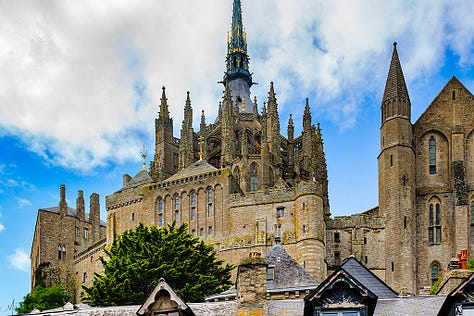
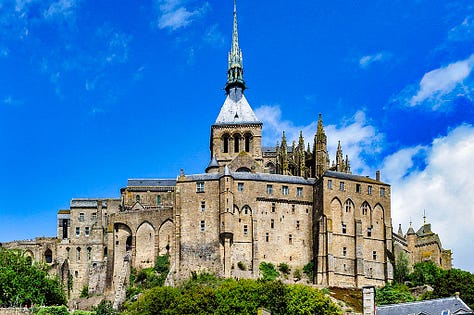
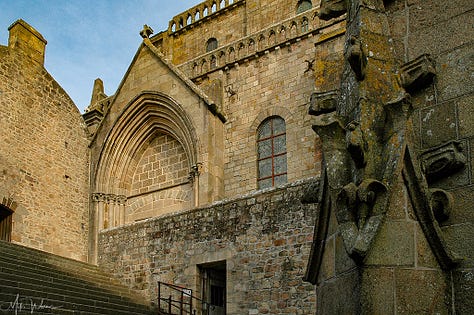
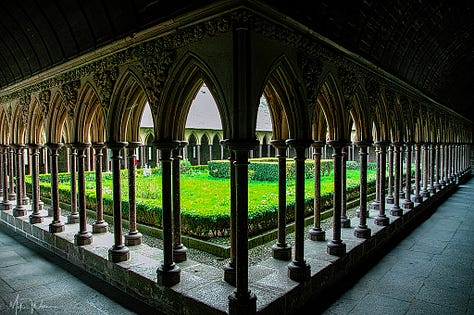
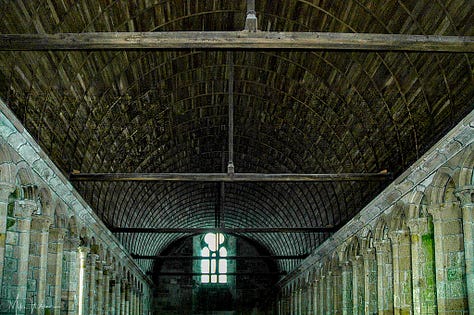

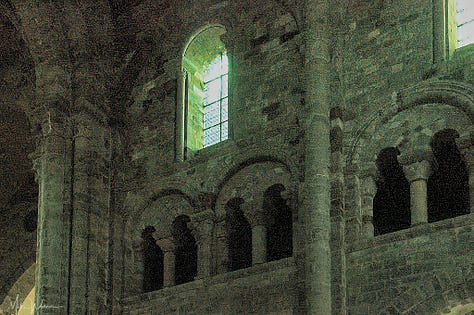
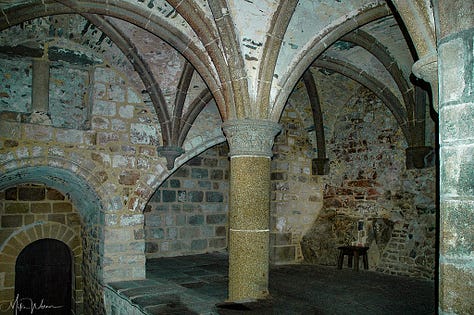
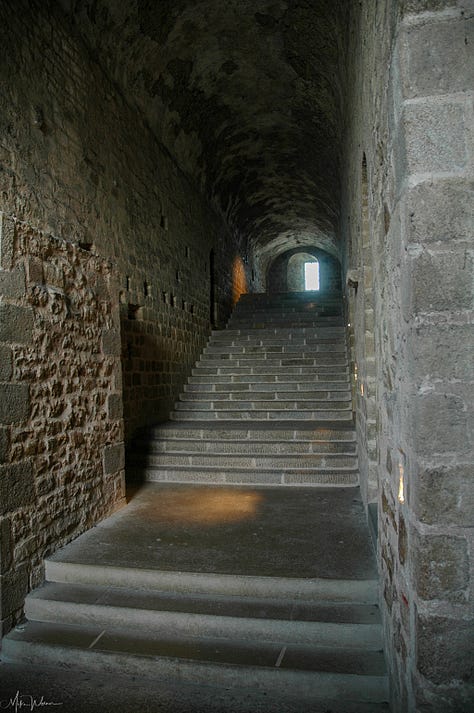
The centerpiece of Mont Saint-Michel is the Abbey of Saint-Michel, which dominates the skyline with its gothic spires and towering architecture. The abbey's structure is a marvel of medieval engineering, built on a rocky hilltop that blends into the island’s natural landscape.
The abbey's architecture reflects a mixture of styles, from Romanesque to Gothic, as various parts of the building were constructed over different periods.
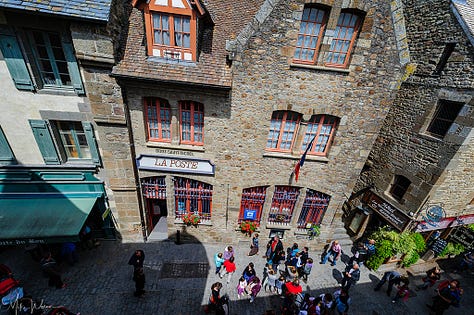
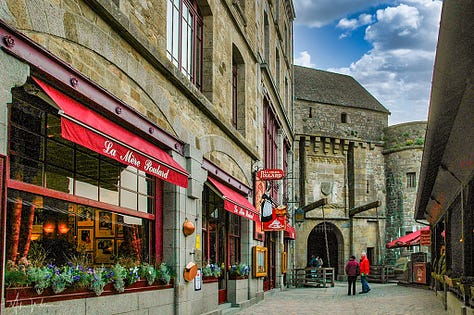
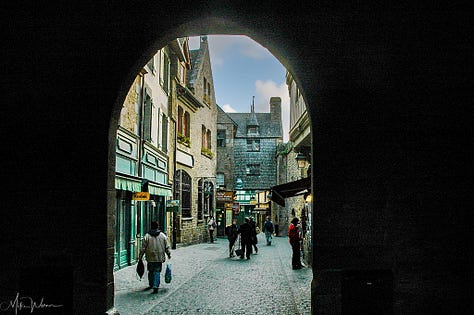

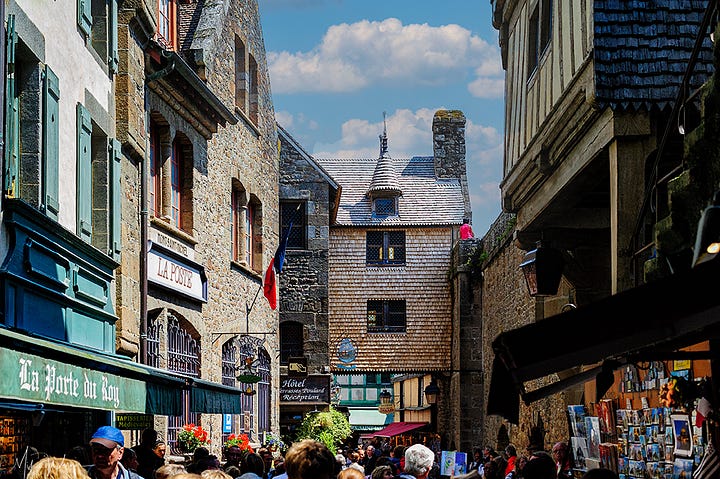
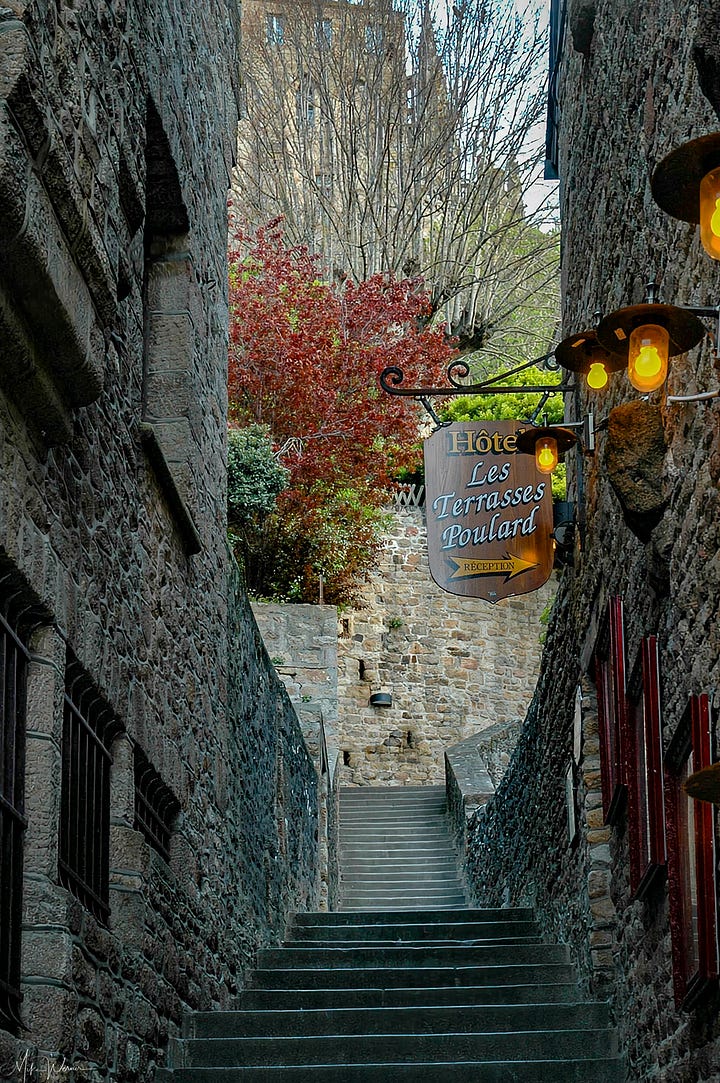
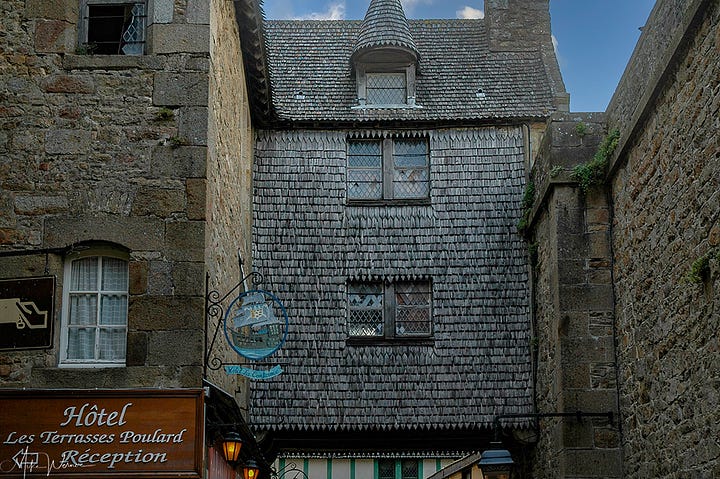
The island also holds a small village surrounding the abbey, with narrow winding streets, old stone buildings, and ramparts.
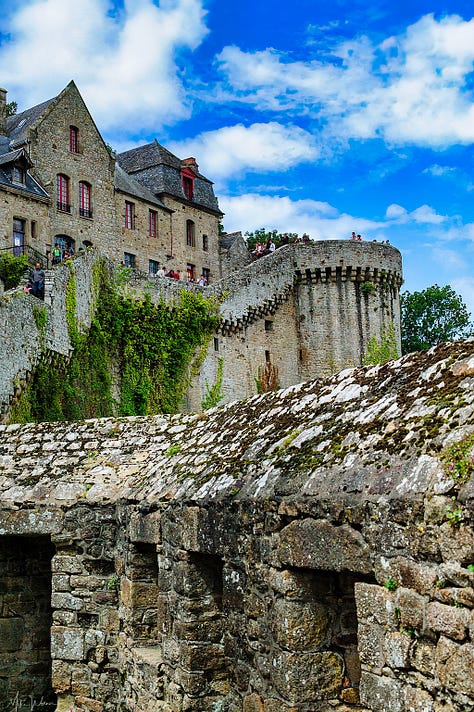
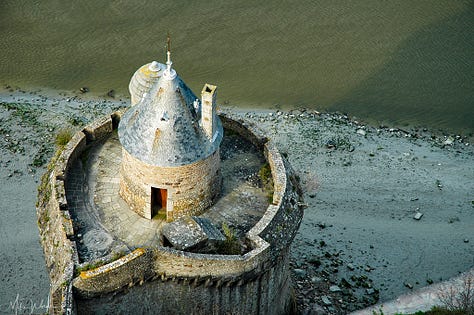
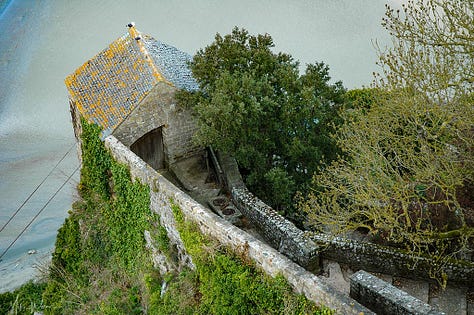
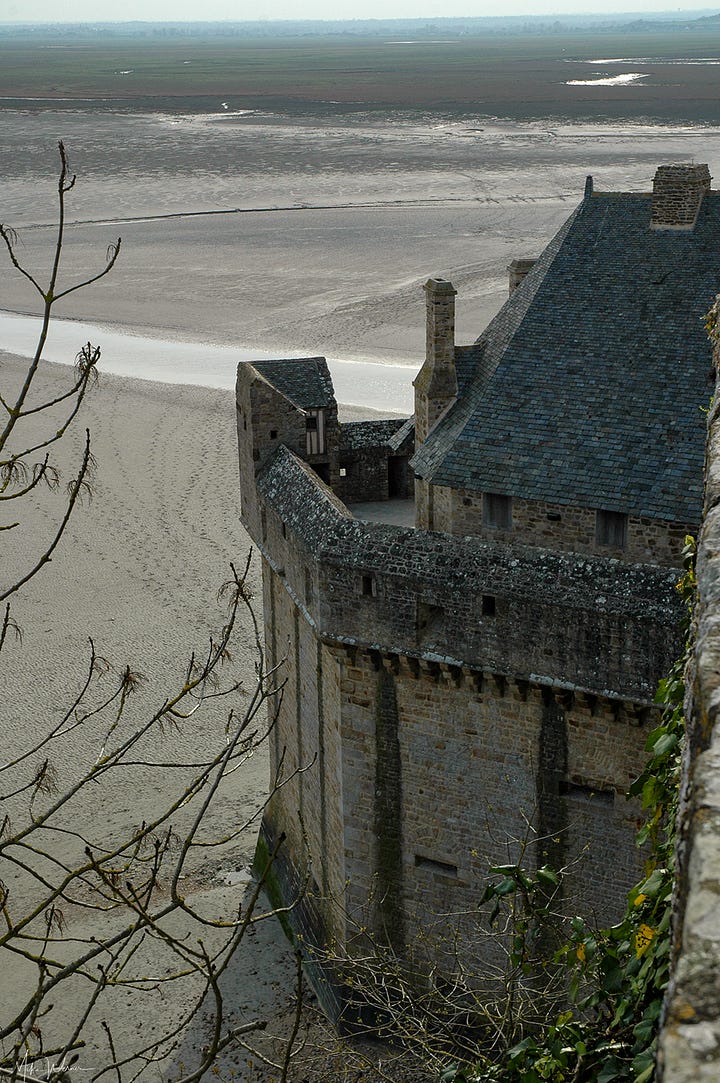
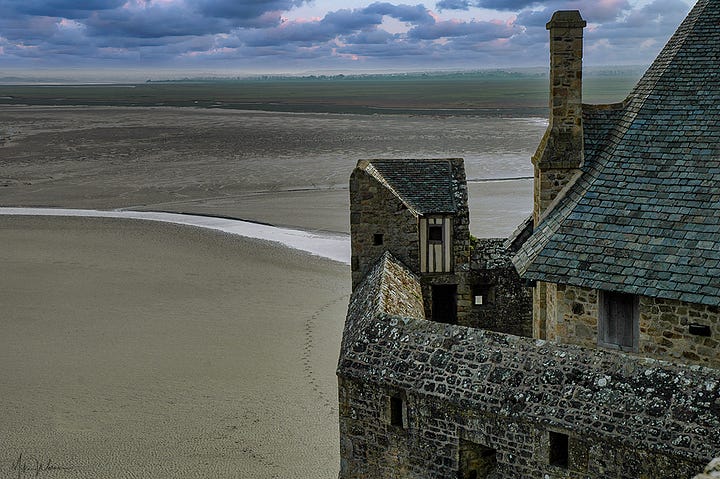
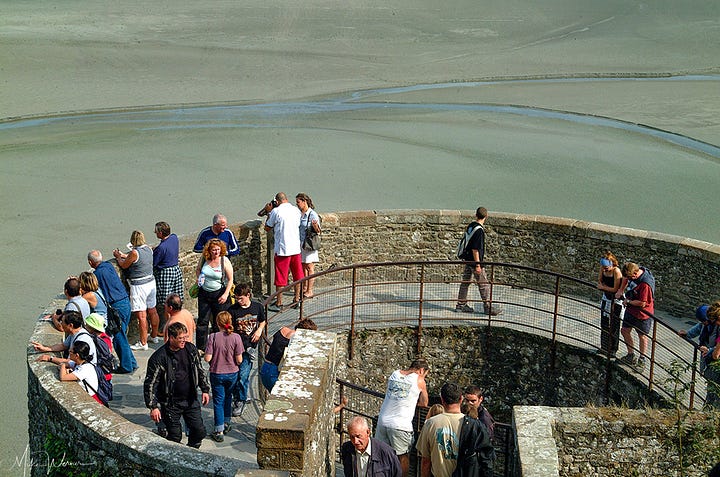

Despite its religious importance, Mont Saint-Michel also has a rich military history. Its strategic location made it a fortress during various conflicts, including the 100 Years' War, when it withstood several English sieges. The fortified walls and bastions that still stand today are a testament to its defensive importance during those times.
Throughout the Middle Ages, Mont Saint-Michel was an important pilgrimage site, drawing thousands of faithful who believed that visiting the abbey and praying to Saint Michael offered divine protection. The tides, which could rise quickly and turn the surrounding sand into dangerous quicksand, only added to the site’s mystique, testing the faith and perseverance of pilgrims.
Camino de Santiago
Mont Saint-Michel is sometimes considered part of the wider network of pilgrimage routes that lead to Santiago de Compostela, known as the Camino de Santiago or Way of St. James.
In the Middle Ages, Mont Saint-Michel was a major destination for pilgrims before they continued their journey on to Santiago de Compostela. The island's abbey was considered a spiritual waypoint where pilgrims could seek divine protection and blessings before continuing their long and often dangerous trek toward Spain. Some modern-day pilgrims include Mont Saint-Michel as a starting point or detour on their Camino de Compostela pilgrimage, viewing it as a sacred place linked to the larger spiritual journey.
Although Mont Saint-Michel is not officially part of the main Camino routes, it has a deep religious history intertwined with the broader tradition of Christian pilgrimage.
UNESCO World Heritage site

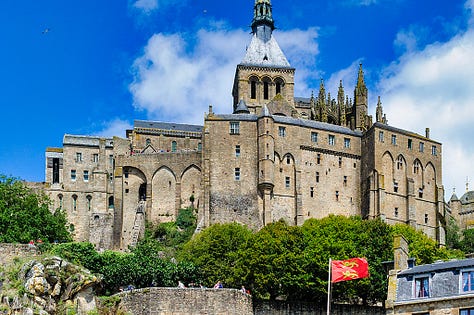
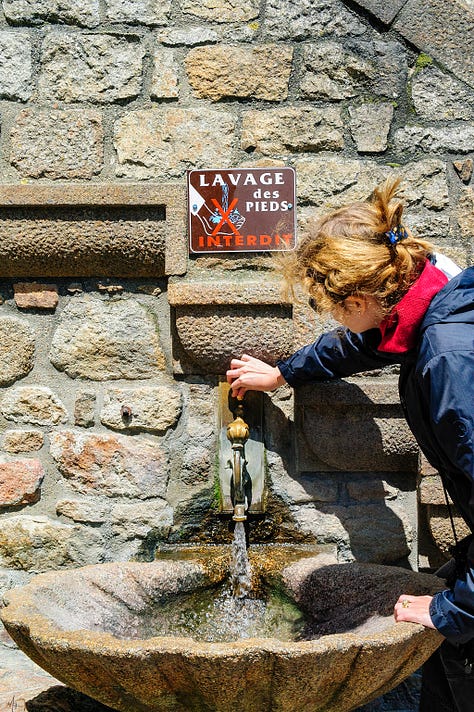
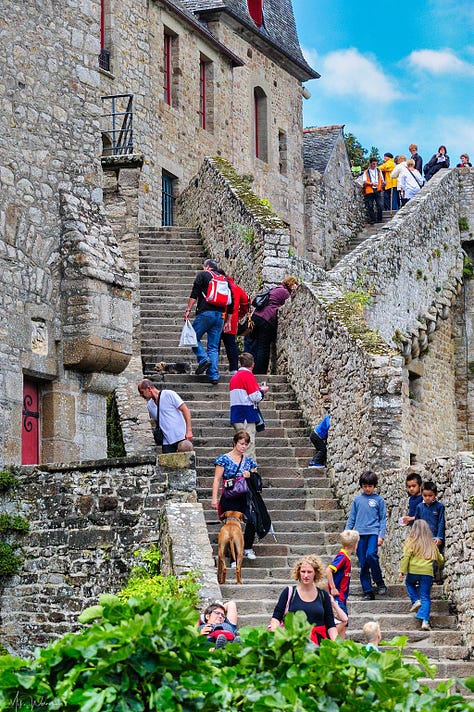
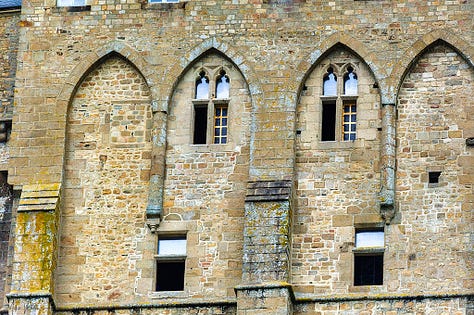

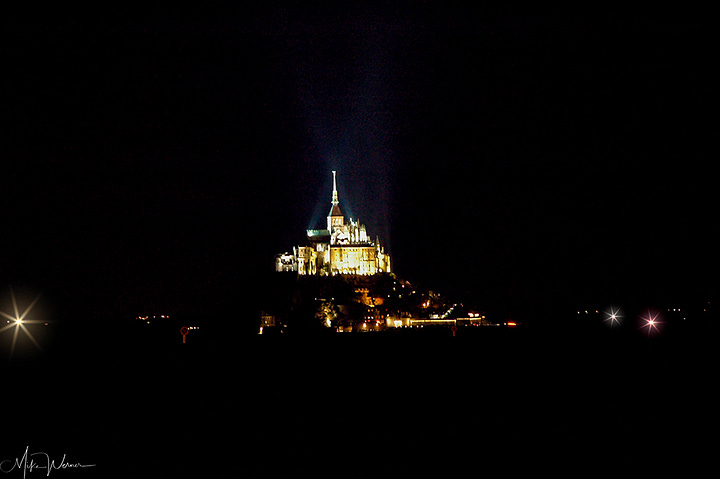

In modern times, Mont Saint-Michel continues to be a very popular tourist destination (one of the most visited sites in France) and a UNESCO World Heritage site. It still functions as a religious site, with monks and nuns living and worshipping within the abbey. The surrounding landscape, marked by the ebb and flow of the tides, adds a dynamic beauty to the site, making it a must-see destination for visitors from around the world.




